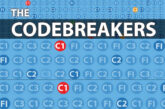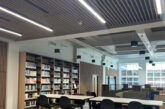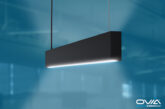
Need help with cracking those EICR codes? The technical team at NAPIT, with the help of the 18th Edition Codebreakers publication, answer your latest coding queries. Click on the photos for a closer look!
MIKE GOHL: WE FOUND THIS WHILE REMOVING SOME LIGHTS, DUE TO THE RELOCATION OF A COMPANY THAT WANTED TO SAVE THE LED LIGHTS… SHOCKING!
One of the biggest problems we face as an industry is duty holders and clients not understanding the risks to them, their employees or the general public from poor electrical work. Dangers arising from unskilled and shoddy workmanship coupled with a lack of knowledge and understanding of BS 7671 are risking lives.
Here we have access to live parts from the terminals of the connector block, not taken into an adequate enclosure, which may also have a mechanical strain on them from a lack of adequate containment for one of the cables connected to it.
Add to this the lack of mechanical protection for unsheathed and single-insulated cables, and we have the makings of a significantly dangerous modification to an existing installation.
Even though LED strip lights of this type often do not require or have a facility for earthing them, they must have mechanical protection for the supply cable, which is usually a supplied flex. There is a requirement for cables to have a cpc throughout their length and be terminated at every point in the wiring, but that can be relaxed where the manufacturer supply cable is of a short length and not buried in a wall.
Installing this LED using a junction box and appropriate connecting flex would have been a simple and safe method, yet we find cost-cutting to the degree of danger a common occurrence.
Duty holders and clients should always use a competent and registered installer to protect themselves, their employees and the general public from these kinds of dangerous installation practices.
Order your copy of NAPIT Codebreakers here










